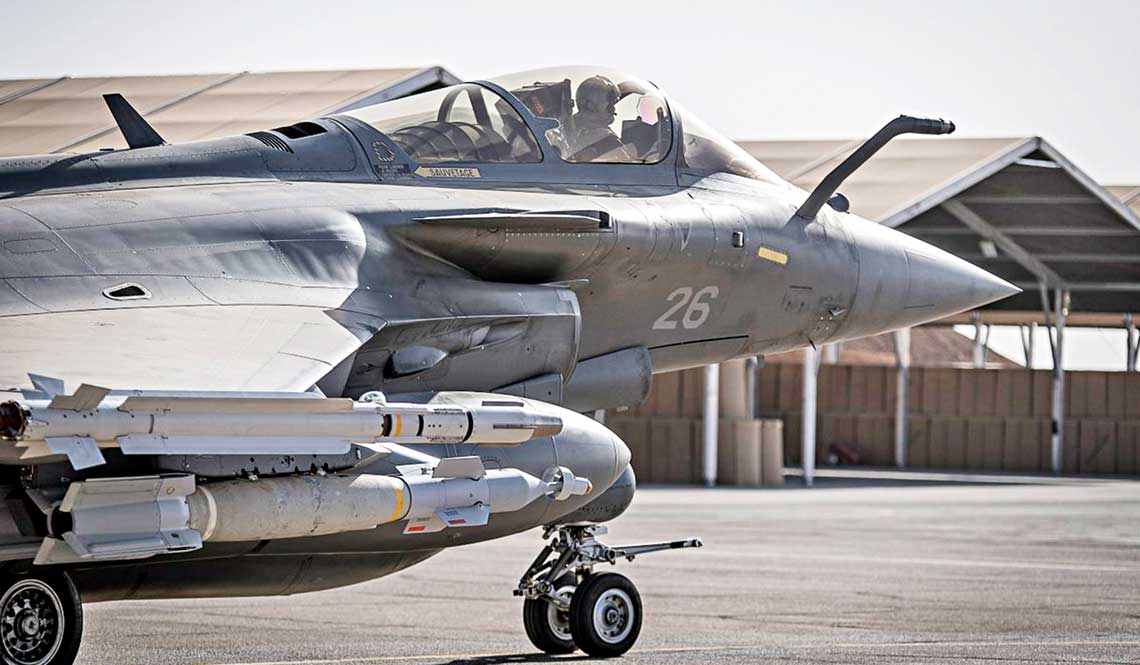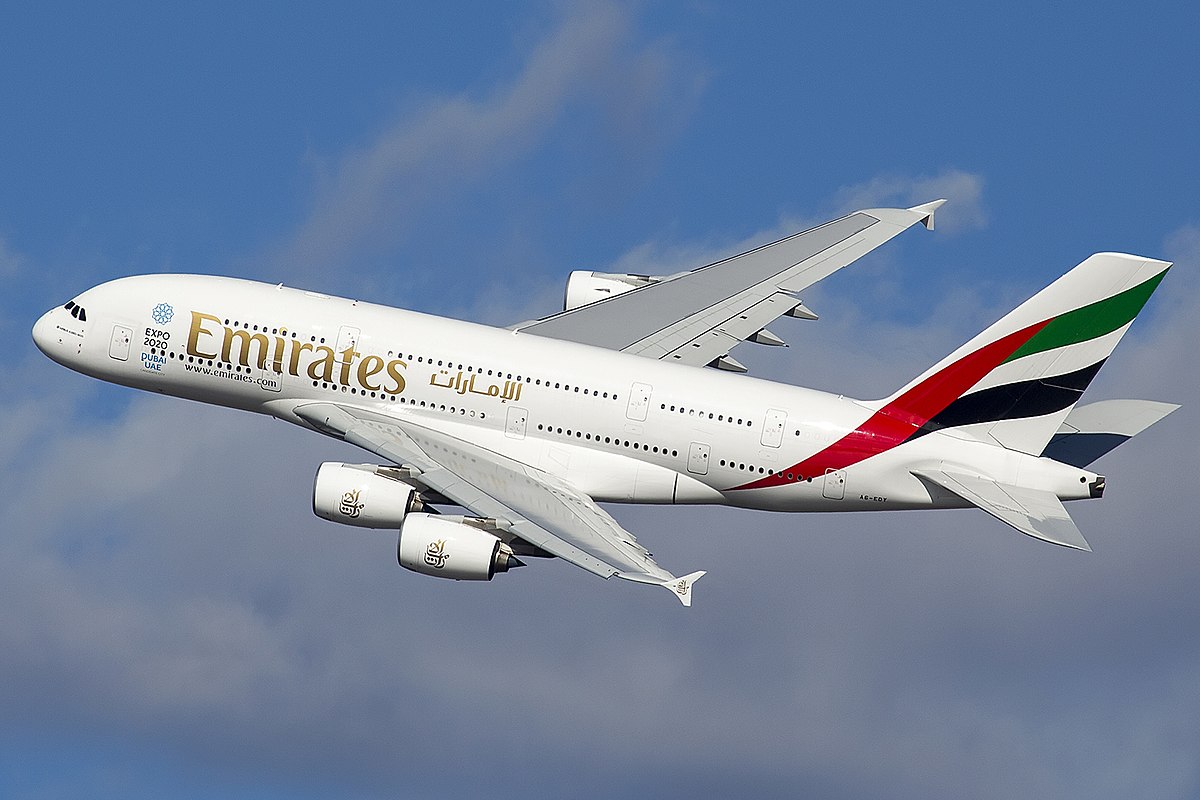
The latest varieties of Dassault Rafale part 2

The armament of Rafał in combat at medium and short distances has so far been exclusively MICA guided missiles in IR (infrared) and EM (electromagnetic) versions. Pictured is a Rafale M “26” armed with MICA IR missiles on beams at the ends of the wings. BAP base in Jordan - Operation Chammal.
The fighting that takes place in many parts of the world, including air battles, usually takes place within asymmetric conflicts. First of all, they use air-to-ground weapons, both in the form of conventional bombs and weapons with laser or satellite guidance. However, this situation may soon change, if only due to the emergence of 5th generation aircraft, the development of electronic warfare and the need to focus on optoelectronic (including laser) guidance due to the possibility of enemy interference with satellite navigation signals. France is also participating in such activities, independently and in coalition with other countries. It turned out that in many ways the equipment of French aviation is far from ideal, and only the ongoing modernization of the Dassault Rafale base combat aircraft will allow it to be fully adapted to the conditions of the modern battlefield.
With the use of new or upgraded on-board systems, equipment and weapons, the Rafale F3-R aircraft will become a full-fledged "workhorse" of French strategic, military and naval aviation. It fully deserves the name it has been called from the very beginning of its design – “avion omnirôle”.
Rafale Standard F3-R - new combat capabilities
Two aspects are characteristic and most important for the implementation of the F3-R standard: the integration of the MBDA Meteor long-range air-to-air missile and the Thales TALIOS sighting cartridge.
Undoubtedly, the revolutionary system that made the Rafale a full-fledged fighter, adopted by the F3-R, is the BVRAAM (Beyond Visual Range Air-to-Air Missile) long-range air-to-air missile. BVRAAM class, Thales RBE2 AA airborne radar with AESA antenna. Its use will revolutionize the Rafale's air combat capabilities, as the Meteor will allow the Rafał to fight targets at around 100 km (MICA EM around 50 km).
The 2018 procurement project provided for the delivery of 69 missiles of this type to the French armed forces, and the PLF 2019 (Projet de loi de Finances) draft budget for 2019 provides for the order of 60 and the delivery of 31 missiles.
The second standout feature of the F3-R is the portability of Thales' new TALIOS cartridge. Previously, Rafale aircraft used Damoclès trays, but as part of the modernization program, it was decided to equip Rafale with a new tank, originally known as PDL-NG (Pod de désignation laser nouvelle génération). Shortly after the announcement of the decision to qualify the F3-R variant, the Directorate General of Ordnance (DGA) also announced the qualification of the TALIOS aiming magazine in a press release published on November 19, 2018. The task of the container is to conduct reconnaissance, identify air and ground targets, as well as targeting and illuminating targets, which allows the use of laser-guided weapons.
The cartridge was equipped with high-resolution television and thermal imaging sensors, systems for stabilizing the field of view and aiming, and image processing capabilities provide identification of targets in air-to-air missions, as well as when attacking ground targets in any weather conditions, both day and day and night . TALIOS also has NTISR (Non-Traditional Information, Surveillance and Reconnaissance) capabilities, so it allows reconnaissance by transmitting collected information in real time to other users, which facilitates interaction between the Rafale crew and ground troops.
According to Thales, the qualification has also been applied to the container support system, i.e. to the intelligent management of equipment and its maintenance (Smart Fleet), to prevent possible failures during the mission and increase the availability of containers, as well as an innovative transport solution for hanging equipment under the aircraft. without the use of other means. According to announcements, deliveries of the first version of the container for the aviation and navy of France should begin by the end of 2018 and will last until 2022. A total of 45 TALIOS must have been delivered prior to this. According to available information, the French armed forces will have 2025 sights of various types by 79, compared to 67 at present. However, given the low availability of this equipment, consideration should be given to whether even this amount can meet future needs. As a reminder, the overall availability rate for sachets in the first half of 2018 was only 54%, while the above figure is based on a theoretical availability rate of 75%. This type of equipment is widely used in OPEX missions, both in Operation Chammal (against the forces of the so-called "Islamic State" in Syria and Iraq) and in "Barkhan" (operations in Africa). They are heavily used in activities in areas with climatic conditions different from European ones, and often fail.
According to Thales, TALIOS will be the first available system that will cover the entire spectrum of tasks - from reconnaissance to detection, tracking and targeting. The high resolution of the bunker subsystems should provide a more complete overview of the situation and greatly facilitate the work of the crews. To help pilots, Thales has also implemented a constant view mode that allows you to integrate the image from the sensors of the device with a digital map. This allows the crew to reliably and quickly locate the observation area in real time. The size and weight of TALIOS is similar to its predecessor Damoclès, making it easier to integrate with humans.
